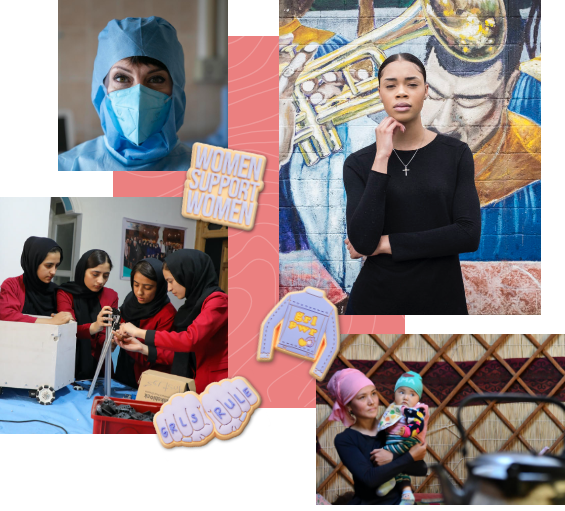girls and women have the right to be #equaleverywhere.



We’re proud to partner with the United Nations Foundation and their advocates around the world to ensure girls and women are afforded the same rights and opportunities as boys and men.

$28T.
a world where women and men participate equally in the economy would result in a $28 trillion increase in global gdp by 2025.
1.8x +.
women make up a greater percentage of healthcare workers making them 1.8 times more vulnerable to job loss during the pandemic.
Learn more.
-
sex vs gender.
-
Gender.
1. a social construct that defines the norms, roles, behaviors and attributes of masculinity and femininity in any particular context. These then determine an individual’s access to the resources, such as information, money, assets and technology, thereby shaping the balance of power, with boys and men typically having more power than girls and women;
2. a social and legal categorization of people (men, women, intersex people); and
3. an identity instituted through a repetition of gendered acts often influenced by social norms. Gender is context- and time-specific. In other words, it is not set in stone and can be fluid. For example, at one point, being a physician was not thought to be an acceptable or suitable profession for women, but as more women became doctors, it became more acceptable.
Sex
The biological term society uses to refer to males, females or intersex people, based on their physical and biological characteristics at birth, such as reproductive organs, chromosomes and hormones.
Resources: GenderTerm UN Guidelines for Gender-Sensitive Language .
-
gender equality vs gender equity.
-
Gender Equality.
The achievement of equal rights, responsibilities and opportunities for all genderswithin every aspect of life.
Gender Equity.
The process of applying a fair and just approach in meeting the individualized needs of all genders in achieving gender equality. This may include treatment that is either equal or different but is considered equivalent in terms of rights and opportunities. This process considers the cultural barriers, systemic oppression and past discrimination imposed on specific groups of people when addressing gender issues.
So, gender equality is the end-goal and gender equity is the means to get there.
Resources: GenderTerm UN Guidelines for Gender-Sensitive Language .
-
understanding gender pronouns.
-
Gender pronouns are pronouns people use to describe themselves or others in sentences and conversations. These include, but are not limited to, masculine (he/him/his), feminine (she/her/hers), or neutral pronouns (they/them/theirs).
People can choose a personal pronoun that aligns with their gender identity, and it is advised to address them using their chosen pronouns, rather than what you think their pronouns should/appear to be.
Transgender People.
A person with a gender identity that is different from the biological sex assigned at birth. A transgender or trans person may identify as a man, woman, transman, transwoman, or as a non-binary person and may have any sexual orientation.
Always ask a transgender person the gender pronoun they prefer to use first and address them accordingly.
Resources: GenderTerm UN Guidelines for Gender-Sensitive Language .
Equality is how we show solidarity.
Together we can raise awareness of a few of the world’s biggest issues facing girls and women.
poverty + hunger . | health . | education . | climate change . | economic growth .
Spread the word.
We’re all in this together. Speak up for girls and women everywhere by taking the pledge then downloading posts you can share to your social feeds.

